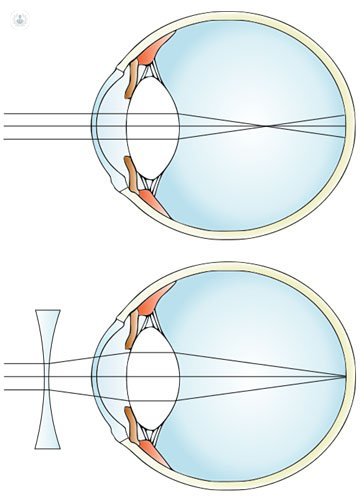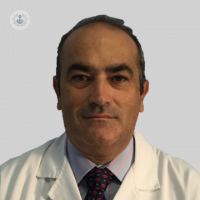All you need to know about refractive surgery
Written by:Refractive surgery is a set of surgical techniques to correct a defect graduation afflicting the patient, called refractive errors, which can be nearsightedness, farsightedness, astigmatism and / or combination thereof.
Eye problems dealing refractive surgery
Eye problems dealing with this surgery are:
- Myopia: is a refractive eye in which the rays of light converge at a focal point in front of the retina, rather than in the same retina. To see good corrective lenses are needed.

- Farsightedness is a refractive defect of the eye that is that light rays coming from infinity converge on a focal point behind the retina. To see good corrective lenses are needed.

- Astigmatism is a refractive error of the eye characterized in that there is a different eye refraction between two meridians, which prevents the clear focus of objects. In the human eye, astigmatism is common in varying degrees and is usually associated with other refractive errors such as nearsightedness or farsightedness. It can be corrected by using cylindrical lenses.

Indications for Refractive Surgery
In principle all patients is recommended, although it should be noted that not everyone can undergo this surgery, so it must first pass a thorough examination to assess the most appropriate patient and the technique or techniques. Depending on the refractive error, the state of the eye and the patient's age, the ophthalmologist will recommend one technique or another. The main requirement is to have more than 21 years and that the refractive error is stable.
Types of Refractive Surgery
There are many surgical techniques for correction of refractive errors. They can be classified into two groups:
- Techniques acting on the cornea allow correction of defects graduation mild or moderate. These techniques are LASIK and PRK. There are other less known, such as the incisional surgery.
- Intraocular techniques: they used in cases of higher rank. It involves the introduction of an intraocular lens either crystalline or substituting. The use of one technique or another depends on many factors ophthalmologist previously studied.
Results of refractive surgery
The results are gorgeous, the complication rate is very low, but is not exempt from the same. It is important to know that although they are very safe techniques, 100% success does not exist. In the previous study the technique or techniques are most appropriate values and informs the patient. The aim of these techniques is to reduce dependence on corrective lenses, since in some cases it is not possible without them.
The results are final in most cases, but not 100%, since in some cases the refractive error is progressive and it is impossible to know with absolute certainty in the preliminary examination.


